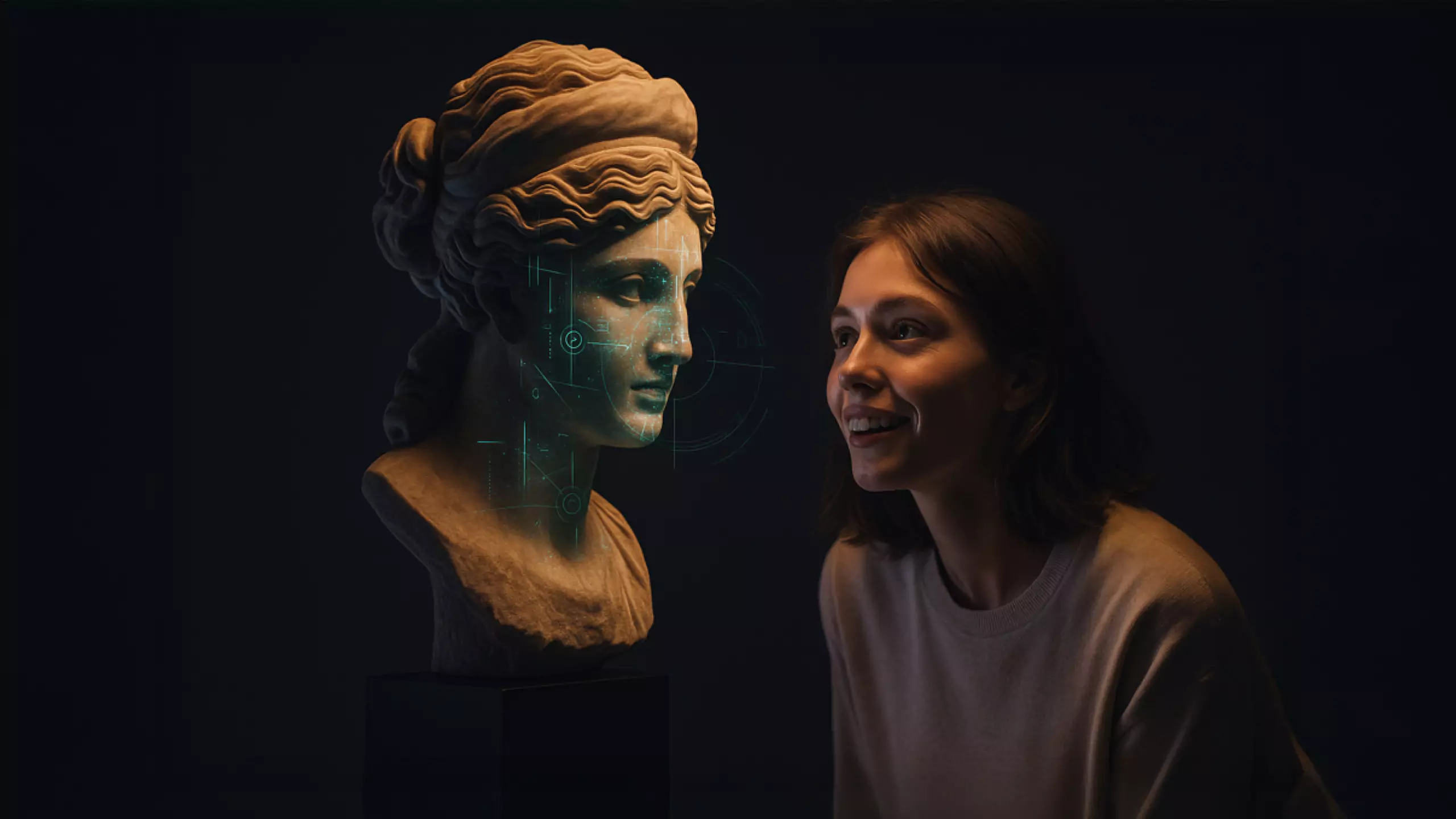There’s a kind of magic that happens in museums and galleries. You wander quiet corridors, drawn in by ancient tools, strange creatures, faded paintings all asking you to look closer and delve into the secrets and stories they contain. And then, just as you lean in, there it is, the glass. A polite but firm boundary. “Look, but don’t touch.”
These barriers leave your viewers distanced from the objects they want to learn more about, leaving them wanting more and asking themselves "What if I could take that glass away? What if I could not only look at history—but step inside it?"
Opening the Case
With XR, involving AR, VR, spatial interfaces and everything in between, we finally have the tools to do something we’ve always dreamed of. We can make the untouchable touchable again.
Imagine yourself standing in front of an ancient ceremonial mask. It’s beautiful, delicate, mysterious. Normally you’d read a little sign and move on. But now, you raise your hand, and suddenly the mask responds. It rotates gently in the air. You can zoom in, trace the pattern, see the materials shimmer. You can even hear stories layered around it unlocking stories about who made it, why, and how it was used.
It’s like being invited into the story instead of standing beyond the glass boundary and observing. And honestly? It’s kind of thrilling.
The Magic of the Digital Twin
One of the things I love most about my work is the opportunity to create digital twins of real-world artifacts. These are high-fidelity, interactive versions of objects that exist in the real world, and now also in a digital one. They’re more that just copies. They’re living records, and they can go places the originals can’t.
Take a single artifact, a one-of-a-kind sculpture or fossil. With a digital twin it can now be shared with the world. It can live in a thousand classrooms, be studied from every angle by researchers, or explored in someone’s living room on the other side of the planet.
And even more powerful, it can last. If, god forbid, something were to happen to the original artifact—fire, water, time—the digital twin is still there. Preserved. Protected. Playable.
For rare objects that hold deep cultural or emotional weight, this feels like a way to honor them and ensure their stories never fade.
Designing Wonder
I’ve been a designer for decades now and I can say with full honesty, this moment—this merging of technology, creativity, and human connection—may be the most exciting time of my career to date.
As designers we’ve often stated that technology should get out of the way and be invisible to an experience. With XR, it finally does. It fades back, and what takes its place is interaction that feels natural, joyful, human. Like reaching out and discovering the world is reaching back.
The team at Younite shares this sense of wide-eyed excitement. We’re a team of designers, 3D artists, engineers, researchers… and also big kids at heart. What drives us and gets us fired up is creating experiences that cause someone’s face light up because they just “held” a 5,000-year-old relic in their hand for the first time. It may be virtually, but its just as meaningfull.
The Future Is Touchable
This isn’t about replacing museums. It’s about expanding them. Extending their reach far beyond the physical walls of the buildings they call home, and exposing more of their archival data information in the process. It’s about making these incredible spaces more inclusive, more alive, and more accessible than ever before.
I believe that every object behind glass still has stories left to tell. And now, finally, we have the means to help them speak again.
So let’s take down the barriers. Let’s reimagine what it means to learn, to remember, and to wonder. Let’s invite the world through the glass—and into the magic.
If we can do that, the past doesn’t just survive. It sings.
Let's Younite
Connect with us to discover how your visitors can step through the glass? Get in touch!
About the author
David Papworth
Dave is the Creative Cultivator (CCO) and Product Leader for Younite. His career has taken him through multimedia, development, design, innovation, and ultimately founding Younite. David's focus is on building teams that can tackle any challenge, look beyond their boundaries, and grow the collaborative relationships Younite desires with our clients.

